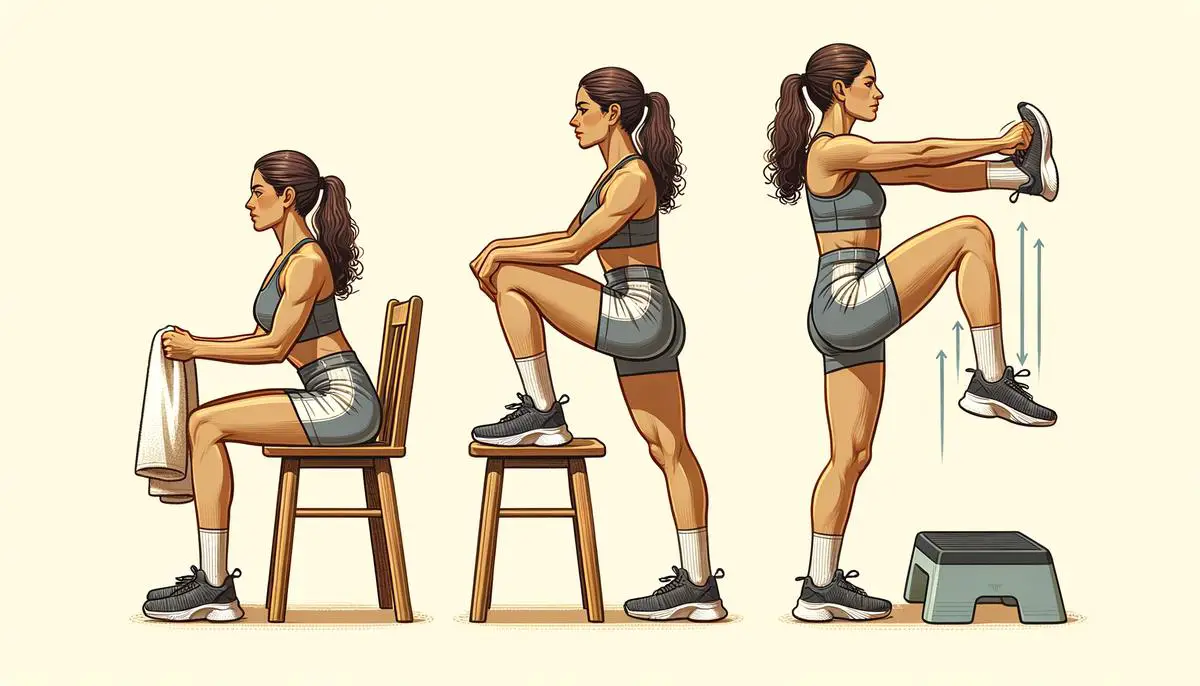Identify Proper Running Footwear
Choosing the right running shoes is crucial for protecting your shins and enjoying a comfortable running experience. Start by considering the level of cushioning, which should provide appropriate shock absorption to reduce the impact on your shins, especially when running on hard surfaces like concrete.
Next, address the support your feet need based on your arch type. High arches may require more arch support, while overpronation (excessive inward rolling of the foot) may call for stability features. A gait analysis at a specialty running store or consultation with a podiatrist can help identify your foot type and specific needs.
Flexibility and material are also important factors. The shoes should allow for natural foot motion while reducing the workload on your shins. When trying on shoes, ensure they flex at the forefoot, indicating they will encourage natural movement.
Consider customization options, such as orthotic-friendly shoes or custom-made insoles, to ensure the best fit for your unique feet. Comfort and functionality should go hand in hand when selecting your running footwear.
Take the time to explore your options and invest in a pair of running shoes that prioritize shin safety and overall comfort. These shoes will be your partners in preventing shin splints and promoting a healthy running experience.

Optimize Running Technique
Proper running form is essential for preventing shin splints and other running-related injuries. Focus on maintaining an efficient stride length, which should be neither too long nor too short. Overextending your stride can place excessive stress on your shins, while a stride that’s too short causes your legs to work harder than necessary. Aim to land your foot directly underneath your body for optimal balance and stress distribution.
Pay attention to your foot strike patterns as well. A heel strike can send a shockwave up your legs, increasing the risk of shin splints. Training towards a midfoot or forefoot strike can create a smoother transition and dispersion of force, reducing the impact on your shins.
Maintain an upright yet relaxed body posture, keeping a straight line from your head through your spine and hips. This alignment minimizes undue tension and helps your body work more efficiently, easing the workload on your shins.
Integrate these insights into your running form gradually, making subtle adjustments over time. Listen to your body’s signals and responses to find the stride, foot strike, and posture that feel best for your personal anatomy and biomechanics. By tuning into your body and making mindful changes, you can develop a sustainable and healthy running form that promotes shin health and overall well-being.

Incorporate Strengthening Exercises
Incorporating specific strengthening exercises into your routine can help alleviate and prevent shin splints. These exercises target the muscles around your shins, supporting and stabilizing your lower legs during runs and increasing your overall endurance.
- Toe curls: Sit on a chair with a small towel on the floor in front of your feet. Using only your toes, grab and pull the towel towards you, then release and repeat 10-15 times per foot. This exercise strengthens the small muscles in your feet and lower shin muscles, which are crucial for impact absorption.
- Heel drops: Stand on a step or raised platform with only the forefoot of one foot on the edge and your heel hanging off. Gently lower your heel below the step level, then push back up to the starting position in a slow, controlled motion. Perform 10-15 repetitions on each foot to foster strength and resilience in your calves and around your shins.
- Calf raises: Stand straight on flat ground or use a step for an increased challenge. Rise on your tiptoes, lifting your heels off the ground as high as possible, pause briefly at the top, then slowly lower back down. Repeat this 20 times, and consider adding weights or wearing a backpack for an enhanced effect.
Implement these exercises 2-3 times a week to fortify the muscles that absorb shock during running. By consistently integrating these strengthening exercises into your fitness routine, you prepare your shins to handle the demands of running and promote overall leg stability and strength.

Understand Progressive Training
To safeguard against shin splints, adopting a progressive training approach is key. This method involves gradually increasing the intensity and volume of your runs, allowing your body, especially your shins, to adapt without the risk of injury.
Start with manageable distances at a moderate pace, focusing on form and building endurance. As your body adapts, increase both the distance and pace in small increments, such as 10% per week.1 This gradual progression allows your muscles, bones, and tendons, including those in your shins, to build the necessary strength to handle increased stress without pain or injury.
Incorporating variations like interval training can also be effective. Interval training combines short bursts of high-intensity running with relaxed running or walking intervals. Begin with shorter high-intensity periods and slowly increase their duration to condition your shins gradually and efficiently.
Another technique within progressive training is systematically altering run terrain and texture. Transitioning from smoother surfaces like tracks to more uneven settings such as light trails can help your shins adapt to different impacts, preventing overuse injuries.2 Introduce these changes discreetly and strategically as your overall physical capacity develops.
Rest days are an essential component of a well-designed progressive training plan. Allowing sufficient recovery time prevents the cumulative effects of fatigue from leading to injury. Even as you push harder in certain sessions, compensate with lighter activity or complete rest on other days to maintain shin health and overall well-being.
By consistently adhering to a thoughtfully designed progressive training plan, you can nurture running efficiency while guarding against shin splints. This balanced approach ensures you enjoy every mile with enthusiasm and strength.

- Johnston CAM, Taunton JE, Lloyd-Smith DR, McKenzie DC. Preventing running injuries. Practical approach for family doctors. Can Fam Physician. 2003;49:1101-1109.
- Hreljac A. Impact and overuse injuries in runners. Med Sci Sports Exerc. 2004;36(5):845-849.
